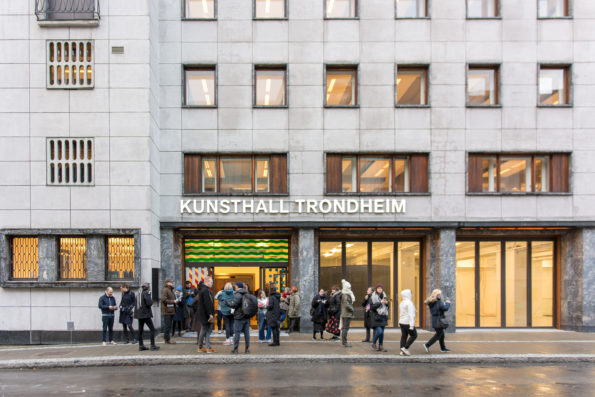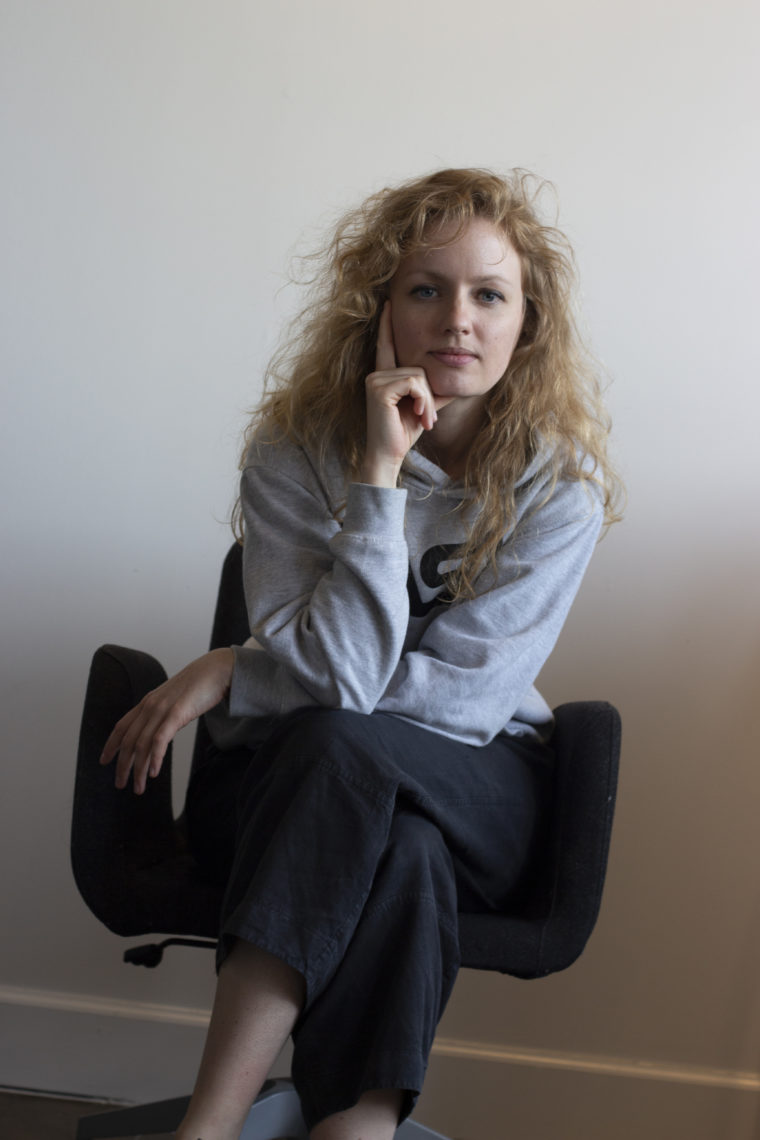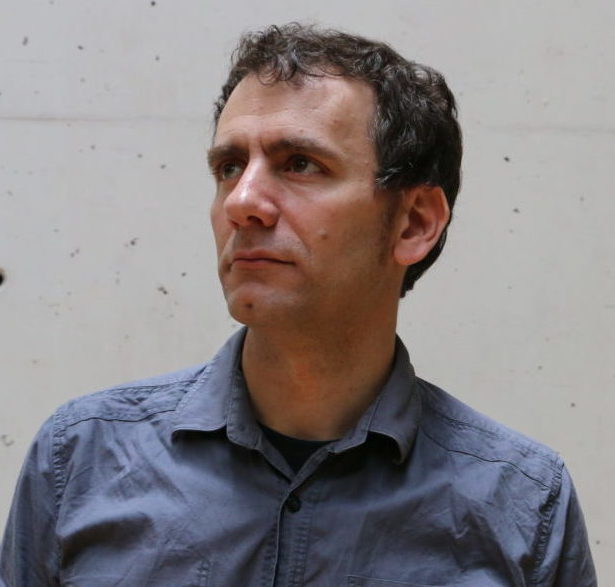Search
To search for an exact match, type the word or phrase you want in quotation marks.
A*DESK has been offering since 2002 contents about criticism and contemporary art. A*DESK has become consolidated thanks to all those who have believed in the project, all those who have followed us, debating, participating and collaborating. Many people have collaborated with A*DESK, and continue to do so. Their efforts, knowledge and belief in the project are what make it grow internationally. At A*DESK we have also generated work for over one hundred professionals in culture, from small collaborations with reviews and classes, to more prolonged and intense collaborations.
At A*DESK we believe in the need for free and universal access to culture and knowledge. We want to carry on being independent, remaining open to more ideas and opinions. If you believe in A*DESK, we need your backing to be able to continue. You can now participate in the project by supporting it. You can choose how much you want to contribute to the project.
You can decide how much you want to bring to the project.

Since 2019 Stefanie Hessler is the director of Kunsthall Trondheim in Norway. Previously she co-founded the art space Andquestionmark (with Carsten Höller) and curated projects for example at Museo Thyssen-Bornemisza in Madrid, TBA21 in Vienna, Flora in Bogotá and co-curated the 6th Athens Biennale and Momentum 8 Biennial in Moss, Norway.
Marti Manen: You have been working as a freelance curator, connected to the academia, with artists, and within the institutional framework. Tell me about the fact that you are now directing Kunsthall Trondheim: What was appealing to you about the institutional framework?
Stefanie Hessler: My decision to direct an institution is largely politically motivated. In Northern Europe, as well as in many other places around the world, we are experiencing a widespread dismantling of structures, be it the welfare system or public arts funding. I think that today, one of the most radical things one can do is to protect public institutions, while—importantly—also thinking and feeling them differently. This is not to say that institutions should be preserved in the way they have functioned over long periods of time. To me, building an institution means to rethink the way it operates in the world, the alliances it forges, the opportunities it creates, who it works with and who it supports and lets itself be shaped by. Especially in a place like Trondheim, which is located in Sapmi territory, we need to work towards decolonising institutions and underlying structures. The institutional framework I want to help create is one that stays responsive to the political situation it finds itself in. I want the institution to be relevant locally, which is why it was important for me to move to Trondheim, while looking outwards and being engaged in the international and planetary web. I want to weave connections between my international network and the Kunsthall and let these different contexts affect each other. And, finally, I want the institution to be about art and about supporting artists.
MM: I completely agree with you about the importance of maintaining public arenas while rethinking them differently. At Index Foundation we are working a lot with the concept of distribution trying to pre-visualize other ways to produce and distribute content. The network idea that you are talking about is connected to it. I really think that we have to find other ways and temporalities. Probably more important now after seeing how a socioeconomic system that was presented as something strong and untouchable is dismantled in a couple of days when the virus appears.
SH: We started this conversation before the covid-19 crisis was unfolding at an ever-faster pace in Europe. It is difficult to think and write anything right now without acknowledging the present moment we find ourselves in. The fast spread of the virus brings to the fore a sense of Western exceptionalism. Here, governments could have reacted much faster, learning for instance from South Korea, even though the intrusions on people’s privacy are very problematic. While lockdowns seem to be effective, the revived resurgence of national borders is very troublesome. And, of course, the effects will play out very differently here in Norway than in structurally deprived places. I sincerely hope that we, and I mean in particular we in the Global North, will consider this crisis as a possibility to rethink our modus operandi.
You bring up distribution, that’s a crucial point! How can we make art even more accessible, for instance using technology. I’m curious to hear more about how you work with distribution. Uploading content is good, but it won’t necessarily reach new audiences just by being online, and not necessarily enable dialogue that isn’t channelled by the institutions themselves. I hope we can become more inventive and reconsider the digital social and public sphere.
As curators, can do a lot of our work online, given the internet connection is stable. I was supposed to travel to Zurich last week for a jury meeting but it was cancelled and instead we met by video chat. We could have planned to meet online in the first place, rather than travel for a three-hour meeting! That being said, I do think that meeting in physical space is important, at times. Different things happen when we’re fully, physically present, and affect is extremely important. This will be one of our challenges now with the virus.

(Stefanie Hessler. Photo by Brittany Nelson)
MM: Yes, we right we need to be more inventive. To find interesting ways to distribute content can’t be just to upload a lot of stuff and not taking care of it. In this new situation it seems extremely important to think about types of dialogues and temporalities, also on how to spend time and focus in some matters. It’s about content, contact, format and continuity, probably. For me, directing Index means to be able to work with the program but also with the structure defining ways of working. What are your plans regarding the structure of the institution?
SH: Kunsthall Trondheim is a new institution. It opened its doors in its current location in 2016, and I became director in 2019. The foundational groundwork had been done excellently by my predecessor, Helena Holmberg. My responsibility is to lead the Kunsthall into its second phase. This means to continue consolidating its position as a public institution in Trondheim, Norway and beyond, to ensure its longevity, but also to ask what an institution of its size and with its particular location can be.
One of the first things I decided to do when arriving at the Kunsthall was to take away the entrance fee that had been charged previously. In Norway, if you are exempt from paying VAT, you need to have an income. I found other ways to deal with this particularity, by redesigning our entrance to host artist editions and an expanded bookstore, among other things. It is key to signal that the Kunsthall is open for all. Free entry is important, but it is not enough. I am now working on opening up the Kunsthall even more, and inviting in people and groups who have not visited the exhibitions and who are often structurally excluded from contemporary art. We are still in the process of applying for funding for an initiative that is very important to me: Emma Wolukau-Wanambwa’s Oi! she initiated at the Bergen Assembly. I invited Emma and her collaborators, Hinda Farah and Sheila Kassim, to develop a long-term iteration of Oi!in Trondheim with a focus on people who are being racialised, but also looking towards the intersections with climate, gender etc. I hope for the Kunsthall to be able to support this and other programmes that I believe can contribute to making a difference in society.
Another key aspect are new commissions. I want to support artists in making work that they couldn’t otherwise make, and to use the Kunsthall as a tool not only for showing but also for producing art. For artists, institutional and curatorial support for creating new work can mean an important step in their practice. I believe that the “institutional weight” can be used in surprising ways, and want to push this much further.
MM: Production. To produce means to work closely with the artists and for a long period of time. It means to be open to options that are not necessarily planned or that can be planned. And this is something that I like about the fact of opening to the surprise. But how to translate this way of thinking to a year budget structure or the evaluation systems?
SH: I wish the evaluation systems were more receptive to factors that can’t be translated into numbers. The type of experience of a visitor is more important than their mere presence in the space. Surprise plays an important role here, and a feeling of surprise can be triggered by an artwork proposing us a new perspective we haven’t considered before. I try to advocate for deep audience engagement. I think of it by reference to Pauline Oliveros’s deep listening practice, which requires depth, awareness and responsiveness. This can also be translated to commissions and production. How can we create a framework that allows for deep engagement with artists and their practices, including the responsiveness to ideas or occurrences that cannot be foreseen nor planned? I think this is really where things can happen! To be able to inscribe this way of thinking the curatorial into funding structures and evaluation systems, even though this seems to become increasingly difficult, a lot of mediation work is necessary. To do this work, we may need to ask ourselves the very fundamental question of what it is that art can do.
MM: Kunsthall Trondheim is not a big institution. Let’s talk about flexibility and fragility
SH: I’m not sure that small scale equals flexibility or fragility. A huge institution can be quite fragile due to its large scale that can be difficult to manoeuvre and to maintain. Flexibility is one of those buzzwords of corporate culture, and while I think that we at Kunsthall Trondheim can respond faster and in unusual ways to certain questions, I would be hesitant to framing “flexibility” as positive only. Sometimes it is important to be inflexible, to take a stand, to be difficult.
To me one of the crucial issues is how to create longevity without engraining structures in ways that might end up harming the institution. the artists and other collaborators it works with or the audience. I suppose one could say that the issue is how to make the institution sturdy and malleable at the same time.
MM: 100%! There is something interesting here in terms of institutional thinking. You are talking about ways of doing, you are analysing language on a critical way and I can feel and share with you this desire to make the institutional something close to artists and visitors, sturdy and malleable from many sides. Something with a power position – at least with agency – but understanding that is part of an ecological system with interdependences.
SH: Yes, an ecological system! In German we have the word “Umwelt” that the biologist Jakob von Uexküll used to describe the world surrounding an organism in the early twentieth century. In the 1960s, the evolutionary theorist Lynn Margulies extended that view to say that the Umwelt is not fixed and not outside, but flexible and part of the organism. We can’t think them apart, since without its Umwelt, an organism couldn’t exist. Margulis was the one who found microbial proof for the idea of symbiogenesis. This is to say that institutions don’t exist without those on the inside and neither without the outside, and in fact, these divides do not really hold either. In a living system, composed of many, we co-affect and co-constitute one another.
(Features Image: Kunsthall Trondheim. Photo by Laimonas Puisys. Courtesy of Coast Contemporary).

Director of Index Foundation, Stockholm, exhibition curator and art critic. Yes, after Judith Butler it is possible to be several things at once. He thinks that questions are important and that, sometimes, to ask means to point out.
"A desk is a dangerous place from which to watch the world" (John Le Carré)